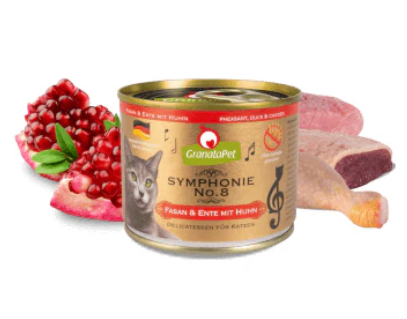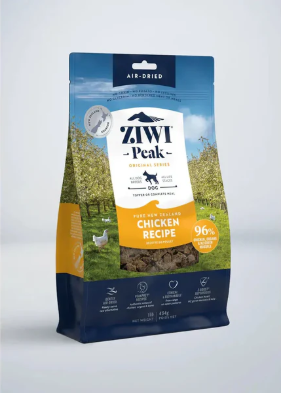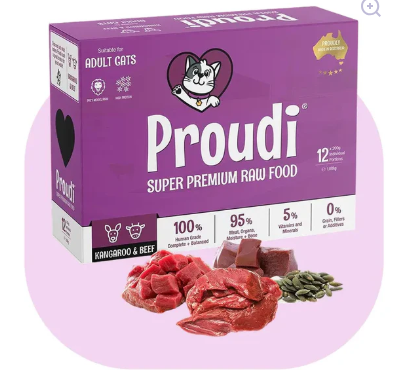Few things inspire so much devotion as a healthy, happy cat. Anyone who shares their life with a feline knows: the right nutrition makes all the difference. But “best” depends on so much—your cat’s age, health, taste buds, and your personal values around ingredients and sustainability. The Australian pet food aisle reflects just how complex that question can get.
You’ll see sprawling shelves: slick tins and pouches, glossy dry foods promising everything from optimum digestion to healthy coats, raw diets claiming to mimic a wild cat’s meal plan, and wet food options that cater to various feline preferences. Each cat food brand makes bold claims and each is carefully formulated to suit a range of feline needs, with some options sourced directly from Australia for those prioritizing regional ingredients. Sifting through these options isn’t easy, especially with so much love and responsibility riding on the outcome.
Let’s dig through a selection of popular Australian cat food brands—wet, dry and raw—so you can weigh the pros and cons and make a decision that truly suits your four-legged friend.
What to Look For in Cat Food: Setting Your Standards
Before comparing brands, it helps to know what really matters for cat nutrition:
● Protein: Cats are obligate carnivores. Protein is essential, and animal-derived sources are best.
● Balanced nutrients: Look for a balance of taurine, vitamins, minerals, and fats.
● Grain content: Some cats may do better on grain-free diets, while others tolerate grains just fine.
● Additives and fillers: Avoid foods heavy on artificial colours, preservatives, and questionable fillers.
● Transparency: Brands that clearly list ingredients and nutritional breakdowns are generally more trustworthy.
Some cats require specialty diets due to allergies, age, medical concerns, or personal quirks. Consulting your vet before any major dietary change is always a good idea.

Comparing Top Cat Food Brands in Australia
Here’s an in-depth look at several leading brands found in pet stores and specialty suppliers around Australia. You’ll see a snapshot of their highlights and drawbacks, intended to help you start narrowing the options.
Royal Canin
Pros:
● Offers breed- and condition-specific formulas (Persian, Maine Coon, urinary, renal, etc.).
● Consistent quality due to rigorous testing and research.
● Widely recommended by vets for therapeutic and prescription diets.
Cons:
● More expensive than most supermarket brands.
● Some formulas contain by-products and grains; may not suit every owner’s ingredient preferences.
Advance
Pros:
● Developed and manufactured in Australia, suited for local feline health issues.
● Widely available, including vet clinics and specialty pet stores.
● Includes functional ingredients like antioxidants and prebiotics for digestion.
Cons:
● Some cat owners find the protein content lower compared to boutique brands.
● Contains grains and cereals as part of formulation (sometimes a red flag for “grain-free” purists).
Ziwi Peak
Pros:
● Air-dried and freeze-dried raw food: mimics natural wild diet but with less mess.
● High meat content, with free-range sourcing.
● Grain-free and uses limited ingredients, good for sensitive cats.
Cons:
● Premium price point, often twice or three times the cost of mainstream brands.
● Some cats need adjustment time to accept the taste and texture.
Black Hawk
Pros:
● Recognised for using real meat as the first ingredient.
● Australian owned and made.
● Variety includes grain-free and regular formulas to suit most cats.
Cons:
● Some recipes still contain fillers like pea protein or tapioca.
● Changes in recipes have occasionally sparked negative reviews about palatability.
Hill’s Science Diet
Pros:
● Known for research-backed formulations, used widely in vet practices.
● Offers a wide array of condition-specific and life-stage foods.
● Reliable quality control.
Cons:
● Some formulas are heavy on corn and wheat, which may not appeal to all pet owners.
● Price can be higher compared to supermarket options.
Applaws
Pros:
● Focus on high-protein, limited-ingredient recipes using chicken, tuna, or mackerel.
● Cans and pouches almost entirely meat or fish, which appeals to many felines.
● Grain-free.
Cons:
● Wet food is intended for supplemental feeding, not complete meals—lacks added vitamins and minerals.
● Limited dry food range if you want a main meal.
Fussy Cat
Pros:
● Wide variety of flavours, especially among wet food lines.
● Simple recipes may appeal to picky eaters.
● Australian made and owned.
Cons:
● Lower in protein than many specialty brands.
● Ingredient quality is mid-range; corn and rice appear frequently.
Taste of the Wild
Pros:
● Grain-free recipes designed to mimic natural feline diets.
● Features novel proteins (venison, smoked salmon) for cats with food allergies.
● Reasonably high meat content.
Cons:
● Imported from the USA, so pricier and not made specifically for local conditions.
● Availability can fluctuate.
Here's a handy table summarising these brands for easy comparison:
|
Brand |
Protein Source |
Grain-Free Options |
Pricing |
Specialty Formulas |
Sourcing |
|
Animal, some plant |
Some |
$$$ |
Yes |
Global |
|
|
Advance |
Animal, some cereal |
Limited |
$$ |
Yes |
Australia |
|
Animal |
Yes |
$$$$ |
Limited |
NZ/AU |
|
|
Animal |
Yes and no |
$$ |
Some |
Australia |
|
|
Hill’s Science Diet |
Animal, some plant |
Few |
$$$ |
Yes |
Global |
|
Animal |
Yes |
$$$ |
No |
Global |
|
|
Fussy Cat |
Animal |
Some |
$ |
No |
Australia |
|
Taste of the Wild |
Animal |
Yes |
$$$ |
No |
USA |
Price key: $ = budget, $$ = mid-range, $$$ = expensive, $$$$ = ultra-premium
Wet, Dry, or Raw: Which Style Is Best?
It’s not only brand choice that shapes feline wellbeing. The format itself makes a difference:
● Wet Food: Offers high moisture, closest to natural hydration, suits cats prone to urinary issues or who avoid drinking water.
● Dry Food: Convenient, easy to store, generally more affordable. May lack the water content some cats need.
● Air-Dried/Raw/Fresh: Aimed at replicating a cat’s natural prey diet. Some owners report glossier coats and better energy, but safety and storage can be trickier.
Mixing wet and dry, as well as rotating proteins, helps cover nutritional bases and keeps cats interested in their meals.
Ingredient Quality vs. Marketing Hype
Packaging can be persuasive. “Natural,” “gourmet,” and “premium” have no regulated nutritional meaning. What matters most are the actual meat content, source transparency, and a clear ingredient list with minimal unnecessary fillers. Some cats have no issues with grains; others need novel proteins such as kangaroo or venison to sidestep allergies.
Read beyond the slogans. Real, named meats (“chicken meal” over “poultry by-product”) should be the main ingredient. Artificial flavours and colours aren’t needed, nor are long lists of ambiguous additives.
Australian-Made vs. Imported Brands
Supporting local companies has its own benefits. Ingredients sourced in Australia tend to be fresher by the time they land in your cat’s bowl. Local brands also tend to formulate foods with Australian feline health in mind, such as highlighting urinary health in a climate where dehydration is more common.
Imported boutique brands can offer varied proteins or alternative feeding philosophies, but their cost is often higher and supply can be less reliable. Consider where your personal priorities lie.
Special Dietary Needs: Seniors, Kittens, and Medical Conditions
Life stages matter. Kittens require more energy, protein, and specific nutrients for growth. Seniors often need diets lower in calories and with joint-supporting additives. Cats with kidney, urinary, or digestive problems may benefit from vet-prescribed formulas.
Many major brands like Hill’s, Royal Canin, and Advance have ranges tailored to particular needs. Boutique raw brands like Ziwi Peak and Black Hawk may have fewer condition-specific options but excel at ingredient quality for generally healthy cats.
If your cat has a chronic condition, prescription formulas—usually only available through vet clinics—are essential and can’t be safely replaced by over-the-counter options.
Where to Buy: Convenience, Expertise, and Service
Whether you prefer a bricks-and-mortar pet store or the flexibility of an online supplier, access to advice can be as valuable as access to product range or fast delivery.
Shopping at a trusted store like 77Paws means access to a curated selection, detailed knowledge about every product on offer, and quick access when you realise the kibble tin is running low. Fast shipping and customer service turn what could feel like a chore into a simple way to support your cat’s health—leaving more time for chin scratches and toy chasing.
Making Choices That Suit Both You and Your Cat
The “best” food is the one that ticks all the boxes for your cat’s age, medical needs, and preferences, while fitting into your budget and values. Cats can be frustratingly picky—what delights one may be snubbed by another. Gradual changes, patience, and the occasional treat can turn even the fussiest eater towards a balanced regimen.
It makes sense to keep a shortlist, trial a few trusted brands, and see how your cat responds over several weeks. Watch for improvements in energy, coat sheen, digestion, and the all-important “empty bowl” signal.
Ultimately, choosing the best cat food in Australia is about striking a balance: science, quality, taste, and your own peace of mind. Even amidst all the clever marketing and countless labels, the bond between you and your cat is built on these small, carefully considered choices. And that’s worth every minute spent making sure breakfast and dinner are just right.
FAQ section:
Any best cat food for allergies?
In the realm of feline nutrition, addressing cat allergies is an inspiring endeavour that champions feline health through thoughtful choices. Histories of allergies present as various symptoms, from skin irritations to digestive disturbances, driving a demand for hypoallergenic solutions that render joyful, itch-free lives for cats.
Options typically involve limited-ingredient diets, where the focus is on simplified formulations free from common allergens like beef, dairy, or grains. Choosing novel protein sources, such as kangaroo, can be a confident step toward offering relief, minimising potential triggers by exploring unique components previously absent from the cat's diet history.
Brands like Ziwi Peak effectively use limited-ingredient recipes, emphasising transparency and quality. Their commitment to natural, single-source protein ingredients with minimal additives caters beautifully to cats prone to allergies. This ensures that you not only meet your pet’s nutritional needs but also bring them closer to optimal health and happiness.
Consulting with a vet remains pivotal before making these adjustments, providing a safety net of professional guidance. They can assist in identifying specific allergens and steering you toward effective dietary options, fostering an environment of trust and understanding as you navigate these choices.
Achieving balance in managing cat allergies evokes a rewarding satisfaction. By tailoring your approach through recognised dietary choices, you richly contribute to a contented, vibrant feline lifestyle.
Where can I buy premium cat food?
Embarking on the quest for premium cat food is a rewarding journey.
Renowned brick-and-mortar pet outlets provide a tangible experience, where the quality and variety of offerings become real as you browse real shelves. These venues, with knowledgeable staff on standby, afford you the peace of mind needed when selecting top-tier nourishment that aligns with your cat’s unique preferences and needs.
Equally beneficial is the world of online shopping. reputable online platforms ensures convenience, an array of choices at your fingertips, and often, access to exclusive brands that might not grace local stores. Such avenues prioritise customer satisfaction through swift deliveries and robust support, affording more cuddle time with your feline friend.
Specialised pet suppliers like 77Paws are exemplary in delivering curated, high-quality selections with a focus on Australian brands. They extend beyond mere transactions, fostering an experience where pet care is intertwined with expertise and trust. Supporting such platforms nurtures an environment of shared pet passion, propelling the pet-owner bond towards harmony and delight.
Who can recommend cat food brands?
Dedicated veterinary professionals emerge as a reassuring beacon when selecting the right cat food. These experts bring a wealth of knowledge about feline health, guiding you towards nutrition that supports the unique needs of your cat. Veterinarians are adept at navigating dietary nuances, ensuring your furry friend's wellbeing remains paramount.
In addition to veterinary guidance, experienced pet shop staff serve as invaluable advisors. Working closely with customers and their pets daily, these specialists gain rich insights into food products that resonate with both felines and their owners. Their expert recommendations tend to reflect a keen understanding of current market trends and individual pet preferences.
Further insight comes from fellow cat owners within online communities. Participating in pet forums or social media groups unveils personal anecdotes and practical advice grounded in everyday feline care experiences. These perspectives can broaden understanding, making the selection process more informed and personalised, ideally complementing professional advice.
Finally, product reviews and manufacturer insights candidly reveal customer satisfaction and quality assurance standards. Reviewing experiences shared by other cat owners provides a nuanced perspective on how different brands cater to varying palates and dietary needs. This collective wisdom can help make nutritional choices that harmonise with both your values and your cat's needs, building towards a thriving partnership.







